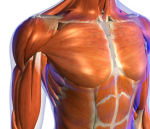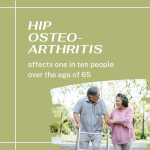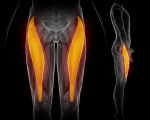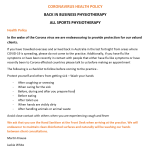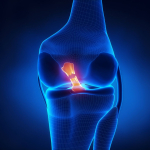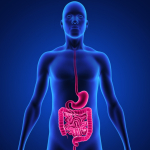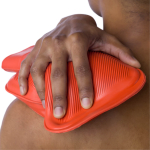
Image Credit: www.frombluestobliss.com
Tension type headaches are associated with the primary headache family whose other members include migraine and cluster headaches. Tension headaches are generally experienced in the front or back part of the head, and in some cases, both regions. Tension headaches can be cause by pain or soreness in the shoulders and neck area, as they are the structures that support the head which can weigh in excess of 5kg.
Tension type headache, may be associated with light and noise sensitivity with pain being moderate and rarely show symptoms of vomiting and/or nausea. Severe tension headaches are commonly confused with migraines in which case people suffer from intense pain caused by muscle contractions around the head, face and neck, as well as aura’s, vomiting and nausea. However, it should be noted that severe pain can be nauseating. Additionally, migraines may be triggered by tension headaches due to pathology in the joint structures of the upper neck. In these cases the life-long migraineur may describe an increased frequency in the number of headaches which they experience per year.
A variety of factors can lead to stiffness and pressure in the shoulders, neck and head including eye strain, infection of the sinus, extreme fatigue, poor posture, over-consumption of alcohol, nicotine or caffeine, and various emotional stressors. If headache symptoms are accompanied by slurred speech, a high fever, or loss of balance, medical attention should be sought immediately as these are considered potential symptoms of stroke or aneurysm. Aneurysms can occur at any age, and strokes aren’t confined to the elderly, as young women who smoke and take the pill are considered as having an increased susceptibility to stroke. Additionally, there seems to be at least anecdotal evidence of hormone therapy modestly increasing the chances of stroke.
Physiotherapy treatment with procedures including muscle energy techniques, dry needling, manual therapy, and massage are effective for almost every type of headache. However, some headaches are more amenable to treatment than others. Upon determining the type and cause of the headaches, in the individual patient, an appropriate treatment plan should be developed to reduce both the intensity and frequency of the pain. (ref 2)
During a patient’s first visit, expert physiotherapists will conduct a complete examination that includes asking a series of questions related to your health history; and based on the response given, the physiotherapist will perform various tests to determine the possible causes of the headaches. For example, you may be asked about previous injuries to your neck or head and the severity and location of the headache pain. It’s possible your therapist may experiment with your muscle strength, measure the range of motion in your neck and shoulders, as well as examine your posture when you are sitting as well as standing. Functional assessment may also include examination of the offending movement, work or exercise to precisely determine the offending load on the spine. Smart phone video taken by the client friends, work colleagues or personal trainer can make analysis easier. (ref 2)
Physiotherapists may suggest manual therapy for the treatment of the headache to improve neck mobility. This type of therapy involves mobilisation of the joints and the stretching of the neck muscles to relieve headache pain. Manual therapy as well as massage therapy carries clinical therapeutic relevance to cure the common tension headache as the treatment is deeply relaxing, calming, and usually allows for instant relief. Exercises for deep neck flexor muscles and shoulder girdle musculature to improve the balanced and shared loading across the spine are also instigated.
If headache pain persists after manual and massage therapy has been performed, other extensive and specialized techniques may be recommended to relieve joint and muscle stiffness and neural mobility. Such techniques include muscle energy techniques involve the physiotherapist locating a joint that is restricted, then gently applying pressure to the area or placing the body part into a position where muscular resistance gives way to movement. (ref 1) The patient will then be directed to move the muscles specifically in the opposite direction against a counterforce that is applied by the therapist. (ref 1) Force will be gentle and is usually applied for six to eight seconds, followed by a release and brief pause to allow the muscles to relax. This technique is repeated three to five times until pain subsides.
Dry needling (sometimes known as intramuscular stimulation) is also used for the therapy of muscle pain and is similar to Acupuncture in that acupuncture needles are used. Severe tension headache pain may be relieved by connective tissue and trigger points being injected with various substances, such as corticosteroids or other solutions undertaken by a medical practitioner.
Physiotherapy is very effective for treating tension type headaches and migraines as well as chronic neck and back pain, joint related stiffness, and stress related issues. After the treatment plan is successfully applied, patient’s should experience a decrease in pain, swelling, muscle spasms, and overall stiffness and tension in problematic regions.
Tension type headaches are one of the most common physical complaints and could potentially become more frustrating if pain is persistent over an extended period of time. In fact many people feel that the headaches have a major impact on their ability to concentrate as well as create mood associated changes. The practice of physiotherapy should be considered if you are one of the many who suffer from nagging headache symptoms as treatments can be designed specifically to relieve pain and correct the problems that may be affecting how you follow through with life’s day to day demands.
Rreferences :
(ref 1.) http://pain.com/library/2011/06/06-seek-medical-attention-headaches/
(ref 2.) http://health.nytimes.com/health/guides/disease/tension-headache/print.html
Created : 11 November 2013

















